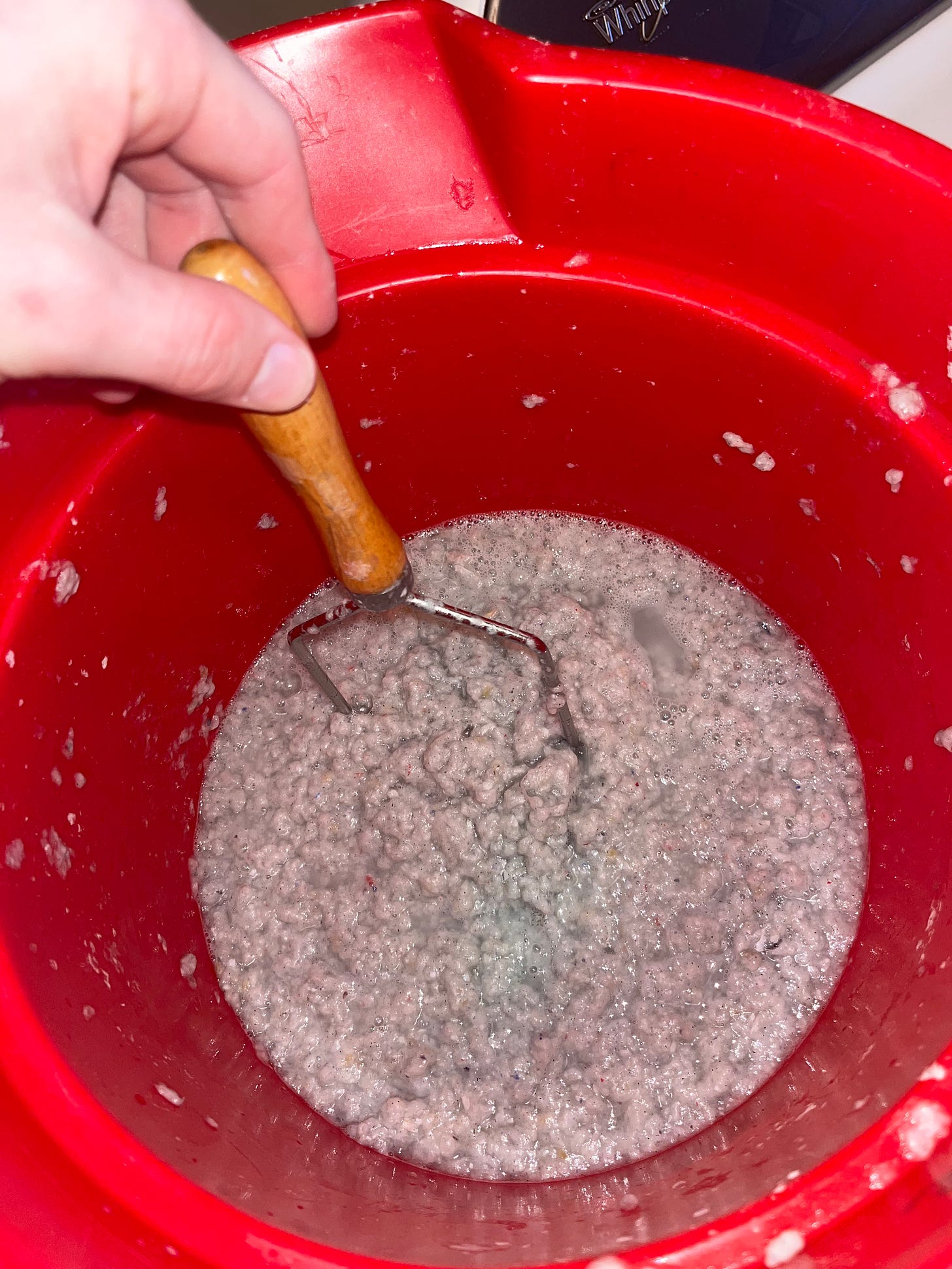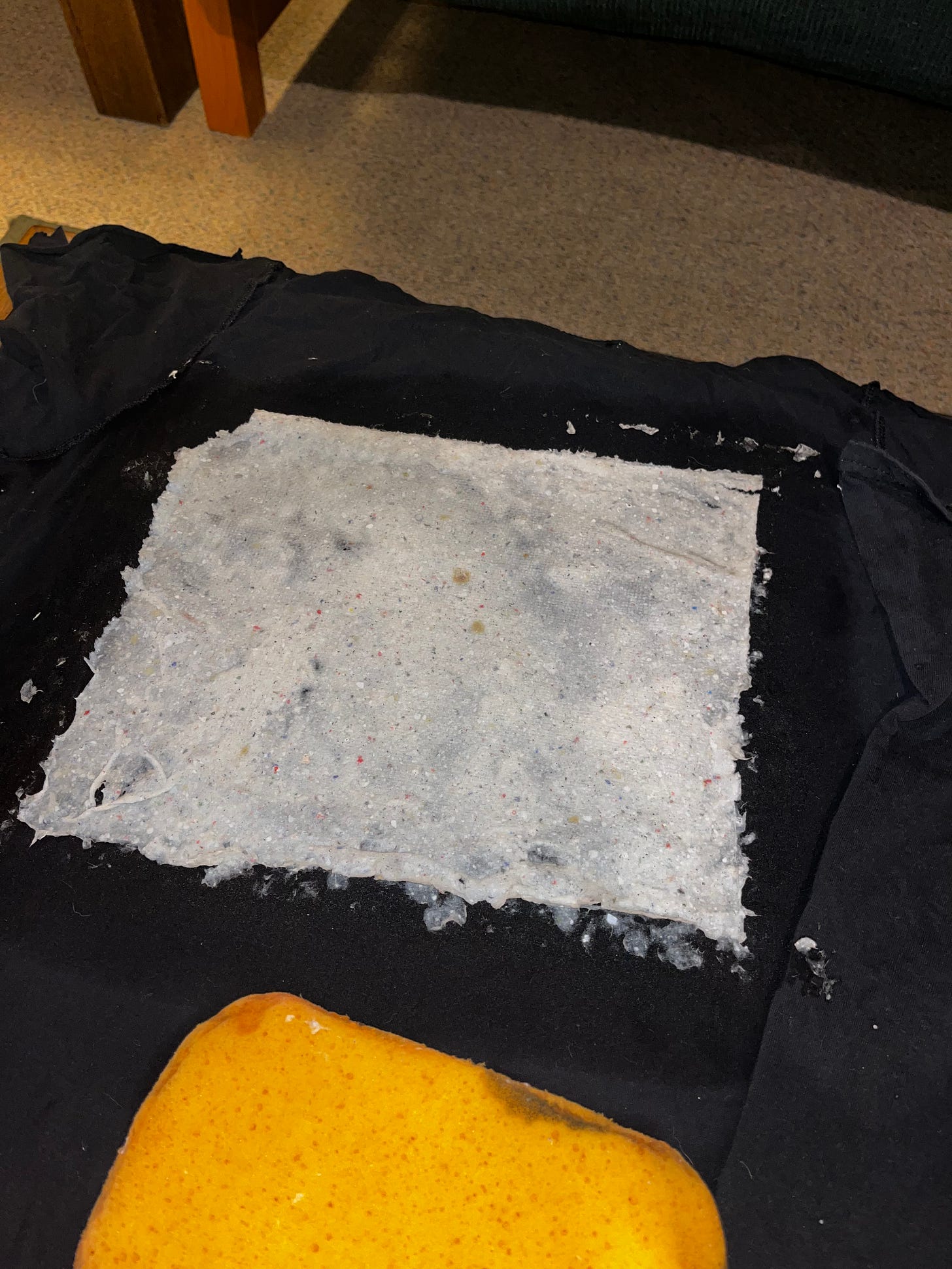Is It Possible to Create Something Without Consuming?
& My Thoughts On Making Homemade Paper
PART I: THE IDEA
When people speak about art as being independent, they are referring to the artist, the musician, the filmmaker, the writer as having produced a piece of work that has been created [meaning: financed] without the help of a large entity with a large pocket that could then have some say in the final product. So as to say, an independent artist is not dependent on wealthy companies to create their art. But this an oversimplification of the idea. Independent artists are still very dependent on companies and corporations who have the resources that are needed in order to create whatever it is they make.
I recently set out to make zine, as a way to self-publish my writing and to get myself to commit to putting a piece of work out into the public. I was confronted very early on by the problems that I’m trying to make a statement on. I set out simply to make something independent, a zine: a collection of writings and photos printed on paper and bound into a book. The zine, titled “A Modern Guide to Communicating in the Real World”, is an ironically, cheeky way of exploring the idea of being on our phones too much and all the negative effects it brings.
I went in to the idea of the zine as something very anti-establishment, since being inspired heavily from a New Yorker article I read some months earlier, I saw the concept of “the zine” as the way indie writers establish themselves. The article proved to me that “the zine” is punk, it is counter culture, and I wanted my own piece to reflect the same sentiment in order to contribute to the long living legacy of zines and because counter culture is being thwarted by the large companies and corporations.
The process of an artist and being creative is not actually unique to artist, Rick Rubin explains in his book “The Creative Act: A Way of Being” that everyone can be creative in that way some of the time, although artist find a way to tap into that process more frequently. It begins as an idea, as all things do. I became interested in the idea that these corporations are continually keeping us trapped in a loop, a rabbit chasing a carrot tied to a stick off his forehead. The idea spun off into a way to criticize the overuse of phones, even within myself, since phone companies and apps and social media platforms seek to suck in more of your attention and time. As everything you see online continues to lure you into buying more things, something newer and shiny, over consumption can keep you stuck in a habit of needing a fix.
Eventually, the idea has to take a physical form. The ink, the binding thread, and the PAPER: the paper being the most symbolic object to me in terms of overuse and waste. I, myself, have carelessly thrown loose sheets or accidental prints in the garbage. So, my interest became if there is a way to maneuver around it all? Is there any way for someone to create something without consuming or are we all trapped in the loop of consumption?
PART II: THE PROCESS
When it came to actually begin the process of creating the physical product, I started months ago in April and May by testing out different practices for making paper at my parent’s home. Most of the thing that I need, I could find by being resourceful around the house, I found a big plastic bin and some pieces of wood to let the paper dry and some old t-shirts to use as drags for a smooth surface to place the paper on. The only thing I needed to buy was a window screen as a sort of make shift deckle [or sifter] to create a back screen to collect the paper pulp.
I had to buy this at Home Depot, which sucks since they donate to anti-gay politicians.; another example of purchase power we have. I raided the recycling bin for my parent’s junk mail, old sale papers, and I used old note book scrapes of my own. I watered it all down for a day before blending it up into a grey, almost purple mushy pulp. I didn’t think it was going to be white enough for paper, and I messed up with junk mail and had tiny pieces of plastic in it from the envelopes. I spent time poking through the mess, sloshing it back and forth between bucket and bucket to filter out the ink and the plastic and try to whiten it with bleach. This is a mess, paper pulp everywhere, all up my hands and the floor of the garage. Eventually, the consistence was good, and I attempted the first batch. After scooping the pulp out on to the screen and setting it to dry flat on t-shirts, it dried out and it looked and felt like paper. Okay, first success.
I designed the cover in the meantime, I decided to go with lino cut prints to help speed up production and because I look the sharp look of those prints. I had to buy lino pads at the art store to make the stamps, but luckily my girlfriend has some tools to cut it out and stamp it on your paper. This meant that I only need to go buy the paints for it. The titles letters would be too detailed to be able to do with lino, so I’ll need to make a stencil; something else to buy? I try to think if there is another, cheaper way to make a stencil and come up with the idea that my mom’s work has a laminator machine and ask her to bring me home two laminated pieces of plastic. I can use one of them to cut out a stencil with an exact-o knife and the other to frame a perfect sized mold or frame for the paper making process in order to make each paper the same, accurate size.
Back at my parent’s home, I create a big set-up to finish my production of paper and begin a new batch. I clear out a space in the garage and set up a folding table as a temporary work space. I have devised a method of plunging the wooden frame and screen into the water and then sifting it back and forth, as if I was panning for gold (although much less lucrative), as I slowly pull it out of the water, creating a soft, even sheet of paper pulp left molded into a single piece. I flip it over quick, in a swift, learned motion on top of a t-shirt, laid out flat on top of a thin piece of wood (something my dad always has laying around). The t-shirt helps to absorb some of the water from the paper, but I used a sponge to soak up the rest from behind the screen before gently lifting it back, leaving just a square piece of wet paper on a t-shirt to dry and become paper. The first time I achieved this, I was blown away, having seen nothing turn into something literally overnight as it dries in the basement. My original setup required taping the t-shirt to the wooden boards every time and then removing the tape to slide the shirt off on to the floor for drying and then slipping a fresh shirt on the wood and taping that again. In an attempt to minimize my amount of waste, I decided to clothespins instead on the edge of the wood to pull the shirt tight, and I could more easily unclip them and move on to the next one.
At one point, the dehumidifier in the basement that is placed in the dark, damp corner of the basement clicked off to signal it was full. I caught myself unaware of the fact that I was having to use gallons of water to make the paper. I pulled the collection bucket from the machine and emptied the couple gallons of water into the plastic bin I was using outside to sift my paper. I could start reusing my water now too.
PART III: THE PRODUCT
The end result for the zine is some weird concoction of new and used. I think all of us are making decisions every day that require us to choose between the cheap way and the easy way, and so many companies are banking off the fact that if they put the carrot in front of your face, then you’re bound to go for it. Making paper is no easy act, and there is no way I could recommend it to anyone, but we have so many resources at our disposal. I went to the art supply store more than once with the need to buy tools needed for the project, but in the end, I was able to find nearly everything needed by asking friends. The idea of needing to continually buy things to keep up or to maintain your things is not a sustainable method of living, as so much of everything is constantly produced, it all lays around somewhere, mostly unused, bought by a previous owner for a single use project. Ask around.
I am always drawn to the idea that it seems crazy that such an enormous amount of clothes are produced every year because it seems to me there are absolutely way too many clothes out there. Thrift stores and Good Will shops are overflowing every time I go. I’ve pulled good clothes from the garbage before. I’ve seen perfectly good furniture and clothes go into the landfill before for no reason. Humans have already been forced to laboriously produce so many commercial products, and we continue to replace items for reason that are only conflated by concepts pushed upon us by those who control the carrot. The most influential aspect of your life is financial, giving that it controls nearly every aspect of your life in some way. Is there not a way to think of consumption in a more self-serving way?




